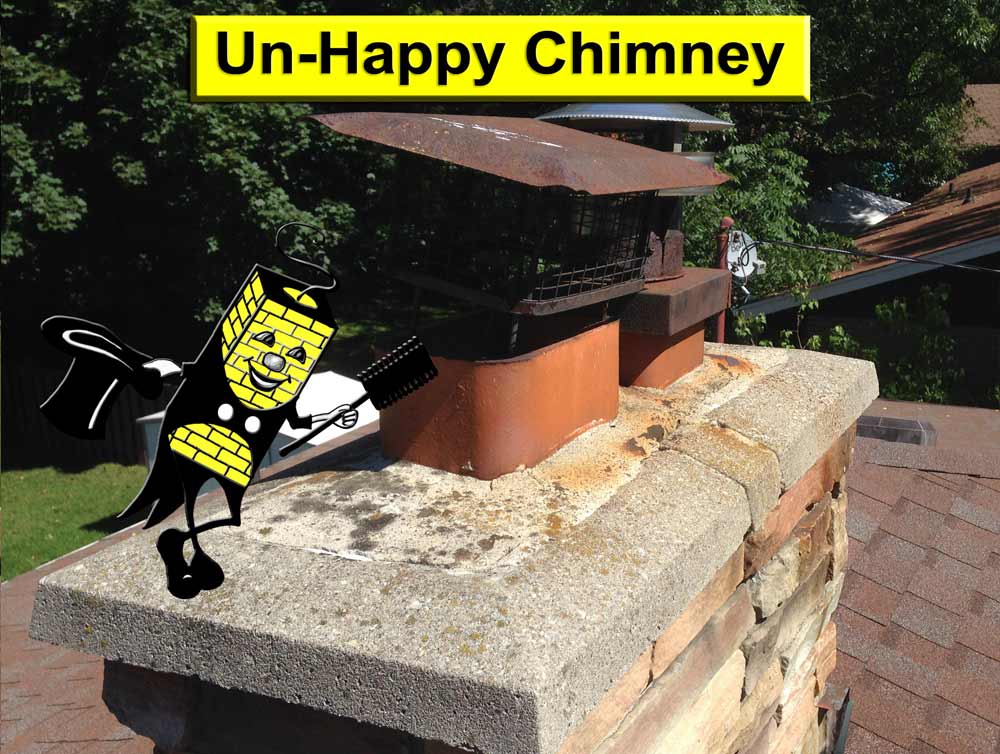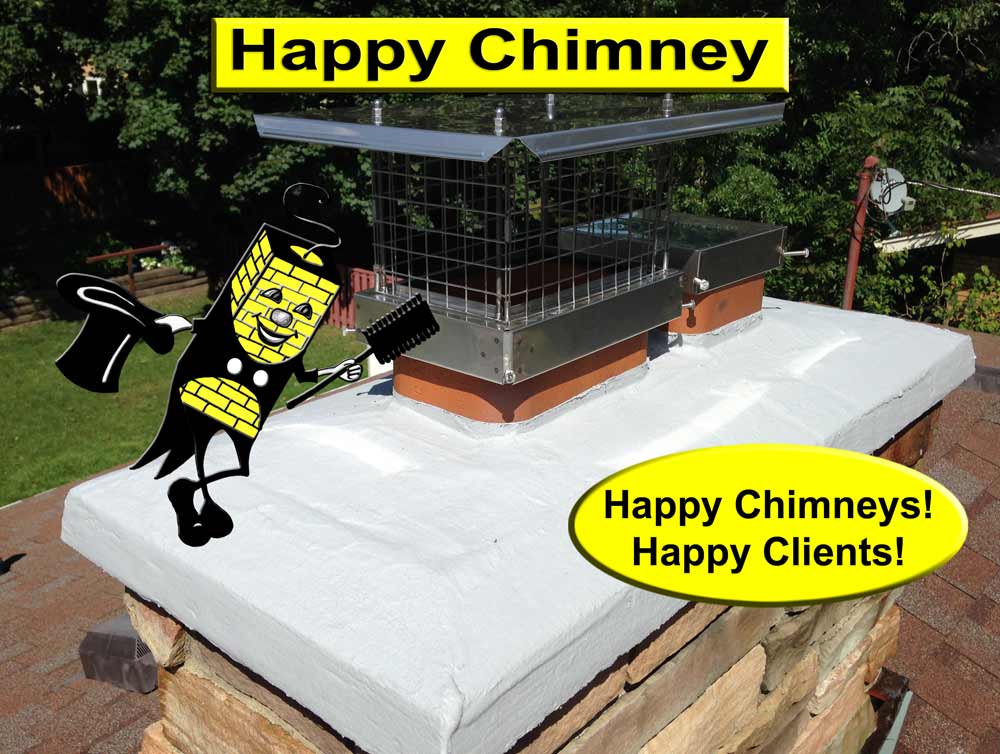Oil Furnace Chimney Liners
For general information on chimney liners please see here.
An oil furnace needs to have a steel chimney liner running from the furnace to the top of the chimney much the same as a wood stove. As furnaces are free standing, this usually involves a piping system from the furnace to the wall and a breech pipe through the wall with a t-pipe connected to a stainless steel liner going up the chimney. On top of the chimney there should be a proper rain cap to keep water, birds and animals out, as well as a covering over the flue tile for the same purpose.
When installing a liner to an oil furnace it is important to use stainless steel for a number of reasons but as the acids in oil flue gases are highly corrosive anything else will quickly rot away.
Furnaces need to have attached liners for safe operation. They help prevent carbon monoxide and other gases from entering your home as well as keeping soot from entering structural areas of the house outside the chimney system.
The flue tiles and mortar inside a chimney almost always have cracks and damage. Even if it was originally well constructed, expansion/contraction, water damage, chimney fires, and age, make gaps and cracks in the flue system inevitable. Gases leaks through these cracks and fill unseen areas outside the flue system with soot. It can be between the flue tiles and bricks or inside the walls and structure of the house. This can result in a house fire.
Dig Deeper
Want to learn more about specific types of chimney liners? Click on the links below to learn more!
Happy Chimneys
We love making chimneys happy again. Drag the yellow box below the image to see how we make an un-happy chimney happy again.


